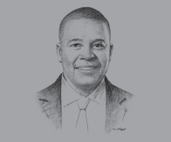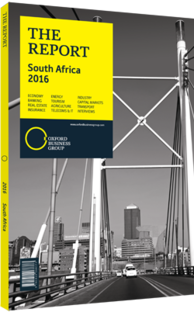Brian Molefe, Group CEO, Eskom: Interview

Interview: Brian Molefe
To what extent can power purchase agreements help improve the overall availability of supply?
BRIAN MOLEFE: Eskom’s generation fleet has not been performing at optimal levels and therefore is not producing the power needed to meet rising demand. This, coupled with delays in new power plants coming on-line, has led to limited capacity. This required load shedding on a few occasions over the past year. Going forward, the generation fleet will require extensive maintenance and mid-life refurbishment, at great cost, and new sources of capacity must be found. Independent power producers (IPPs) are one solution to meeting the capacity gap, through renewables and gas. Partnerships with the private sector will be key to meeting future demand. Energy security cannot be addressed in isolation, and our ability to close the supply gap is a key component in meeting national growth targets.
By providing space for maintenance and reducing the need for load shedding, IPPs play an important role in ensuring security of supply at a time when our generating capacity is closely matched or exceeded by electricity demand. We purchased 6022 GWh from IPPs at a cost of R9.5bn ($82m) in 2015. Capacity of 5701 MW has been contracted with IPPs as of March 31, 2015. Of this, 3887 MW relates to contracts under the Department of Energy’s (DoE) renewable energy programme. To date, a total of 1795 MW of renewable energy capacity has been connected and is providing power to the grid, with an average load factor of 30.85% for 2015. Eskom has set up the Grid Access Unit for IPPs and generators with the main objective of being the first point of contact for IPPs and servicing their needs as customers.
In the meantime, municipal distribution infrastructure must be improved. Municipalities face the challenge of inadequate investment and the need to maintain their distribution infrastructure. Some of them are not financially viable due to an institutional flaw in how they have been configured: they do not have a tax base and are therefore are perpetually dependent upon grants, which is not sustainable. We must determine how to assist them in building their capacity in order to manage their finances better.
How would you rate the progress achieved in providing electricity to all South Africans?
MOLEFE: In partnership with the DoE, we have connected more than 4.6m households to the distribution network since 1991. Although the DoE funds the connections, we bear the on-going operational costs and receive revenue for electricity sold. The National Census of 2011-12 identified 3.4m South Africans who were still without electricity, most of them in the Limpopo, Eastern Cape and KwaZulu-Natal provinces. In order to achieve the UN’s Millennium Development Goal of universal access to electricity by 2025, the DoE has accelerated the Universal Access Programme. This programme is now being implemented in more remote areas, where the construction of network infrastructure is more expensive due to the distances involved and the difficult terrain encountered. As a consequence, we did not achieve the targeted number of national electrification connections, because of the significant infrastructure investment required in these provinces.
How can more responsible consumer and industrial consumption be encouraged?
MOLEFE: We have been saying for some time that the national power system is constrained and vulnerable due to the lack of available generation capacity. Therefore, to balance and protect the power system, we have to apply demand management practices, which include both supply-side and demand-side options. Additionally, we need to change the behaviour of our consumers so that they become more energy efficient and contribute to reducing demand.
You have reached the limit of premium articles you can view for free.
Choose from the options below to purchase print or digital editions of our Reports. You can also purchase a website subscription giving you unlimited access to all of our Reports online for 12 months.
If you have already purchased this Report or have a website subscription, please login to continue.

